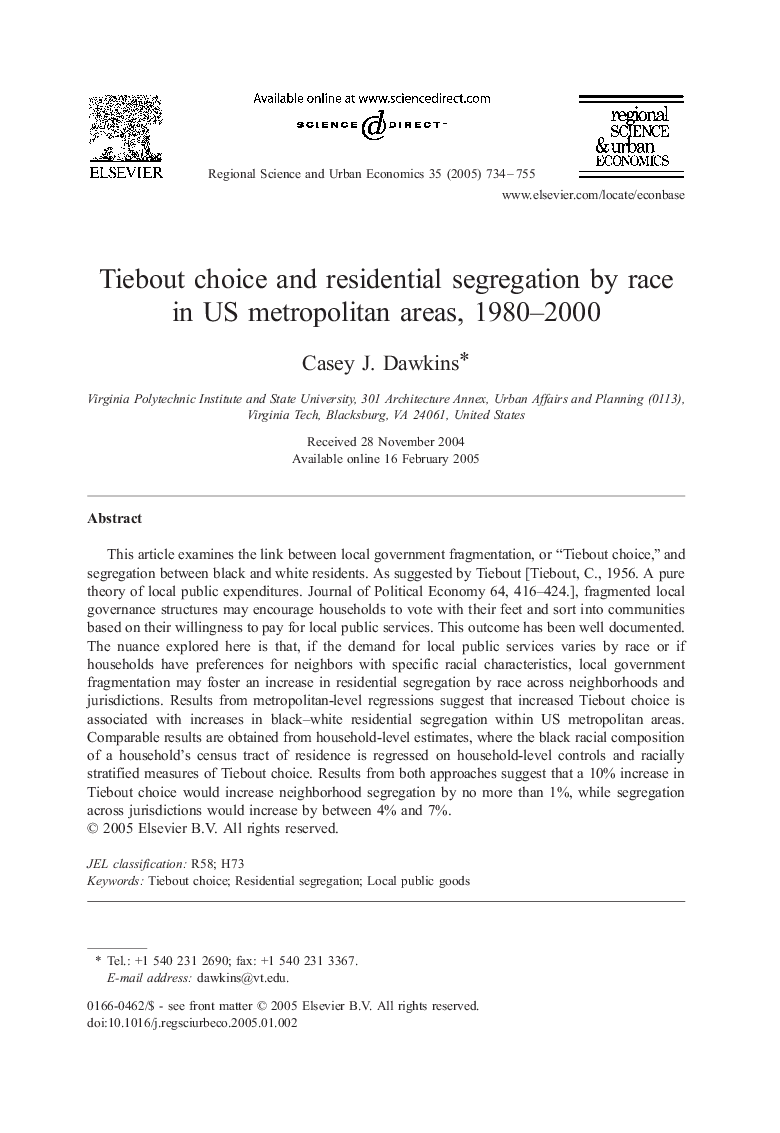| Article ID | Journal | Published Year | Pages | File Type |
|---|---|---|---|---|
| 10482462 | Regional Science and Urban Economics | 2005 | 22 Pages |
Abstract
This article examines the link between local government fragmentation, or “Tiebout choice,” and segregation between black and white residents. As suggested by Tiebout [Tiebout, C., 1956. A pure theory of local public expenditures. Journal of Political Economy 64, 416-424.], fragmented local governance structures may encourage households to vote with their feet and sort into communities based on their willingness to pay for local public services. This outcome has been well documented. The nuance explored here is that, if the demand for local public services varies by race or if households have preferences for neighbors with specific racial characteristics, local government fragmentation may foster an increase in residential segregation by race across neighborhoods and jurisdictions. Results from metropolitan-level regressions suggest that increased Tiebout choice is associated with increases in black-white residential segregation within US metropolitan areas. Comparable results are obtained from household-level estimates, where the black racial composition of a household's census tract of residence is regressed on household-level controls and racially stratified measures of Tiebout choice. Results from both approaches suggest that a 10% increase in Tiebout choice would increase neighborhood segregation by no more than 1%, while segregation across jurisdictions would increase by between 4% and 7%.
Related Topics
Social Sciences and Humanities
Economics, Econometrics and Finance
Economics and Econometrics
Authors
Casey J. Dawkins,
